Is My Bamboo Dead? 4 Signs to Look For
-
Jana Blagojevic
- Last updated:
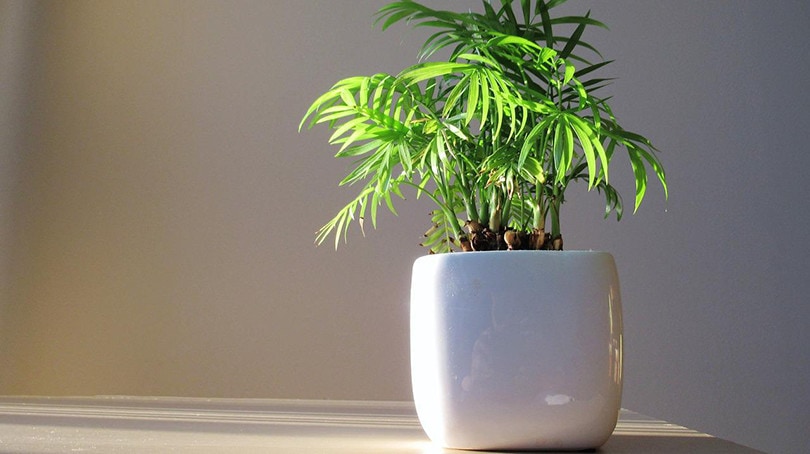
Bamboo is a beautiful, upright ornamental plant that can make any garden or home burst with character. This plant can decorate indoor and outdoor areas while appearing as a natural green fence. Bamboo potted inside can grow up to 5 feet tall when perfect conditions are provided. If your bamboo plant begins showing any signs of stress, it is time to check how you care for it and whether there is something you can improve.
The most common signs of a bamboo plant dying will be the discoloration of the leaves or stalk, droopy foliage, and stunted growth. If all the leaves of your bamboo plant are brown, crispy, and falling off, it’s likely too late and your plant is dead. Read the article below to learn more.
The 4 Signs to Tell if Your Bamboo Is Dead
1. Yellowing Stalks
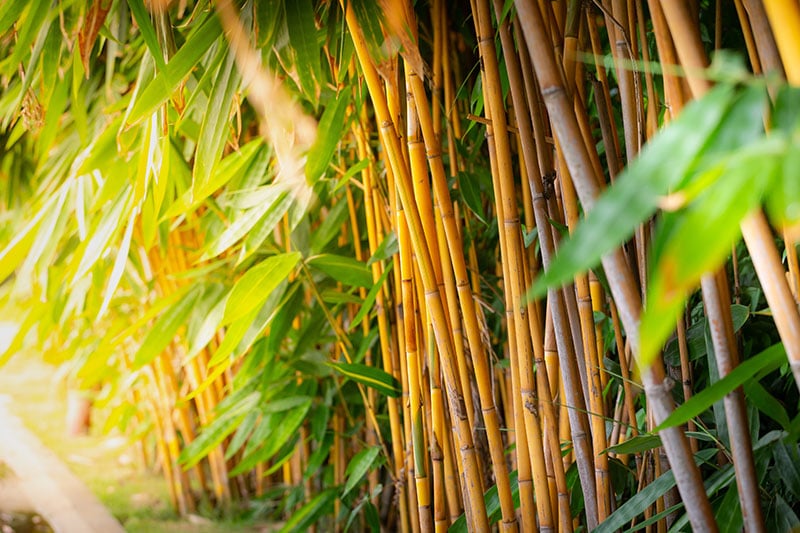
A healthy bamboo should have an evenly green stalk and leaves. When you notice the stems or bamboo leaves turning yellow, it can signal the plant is wilting or dying. Discoloration is almost always a sign of stress, so acting fast is crucial as soon as you notice it. If you leave your plant neglected, the leaves will slowly begin to droop and eventually fall off entirely. The most common reasons your plant will start dying while showing these symptoms are underwatering and direct sunlight.
While these symptoms reveal a lot about your plant’s health and indicate wilting or dying, it is not challenging to revive your plant if you act immediately.
2. Tips of Leaves Turning Brown
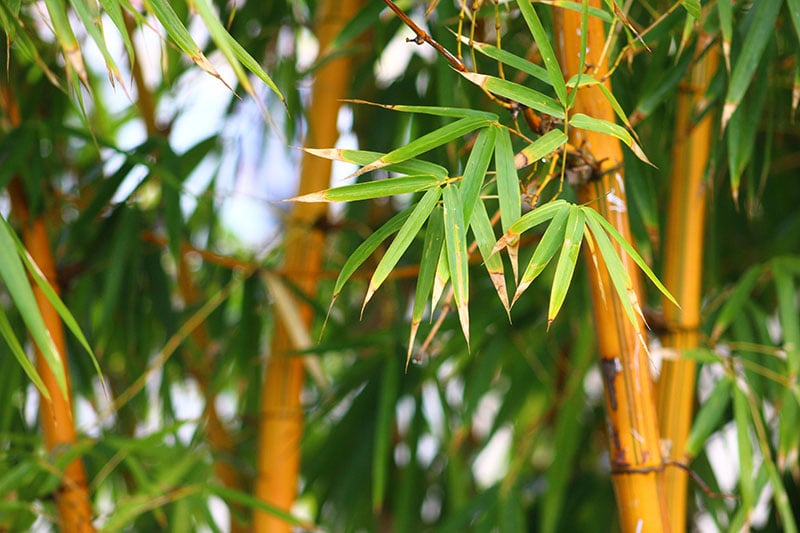
Bamboo is a plant that enjoys indirect sunlight and evenly moist soil. It is recommended to place a potted bamboo plant in a naturally shaded area, away from direct sunlight, to avoid the leaves yellowing or their tips turning brown. If your plant’s leaves continue to turn brown over time, something else may be going on.
Sometimes, the chemicals from tap water interfere with the proper development of roots. You can prevent this by using filtered water or rainwater, which has the ideal pH level. You can also let your regular tap water sit out for a while, allowing for the chlorine to evaporate, leaving you with a decent water quality for your plants.
3. The Leaves Stop Growing
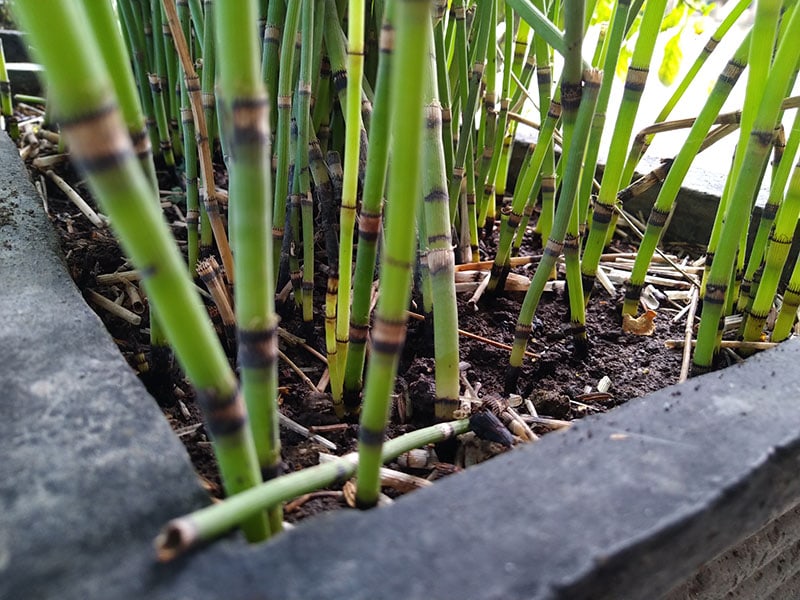
If you notice your thriving bamboo plant has suddenly stopped showing any new growth, the plant’s roots probably cannot reach any more nutrients. You will probably notice this happen at one point, especially if your bamboo is potted. Once your plant cannot find any more nutrients in the soil, it will shield itself by shutting down.
Finding a quick remedy is crucial if you notice this happening. Replant your bamboo in a bigger pot with fresh soil and hope for new and improved growth.
4. Curling or Droopy Leaves
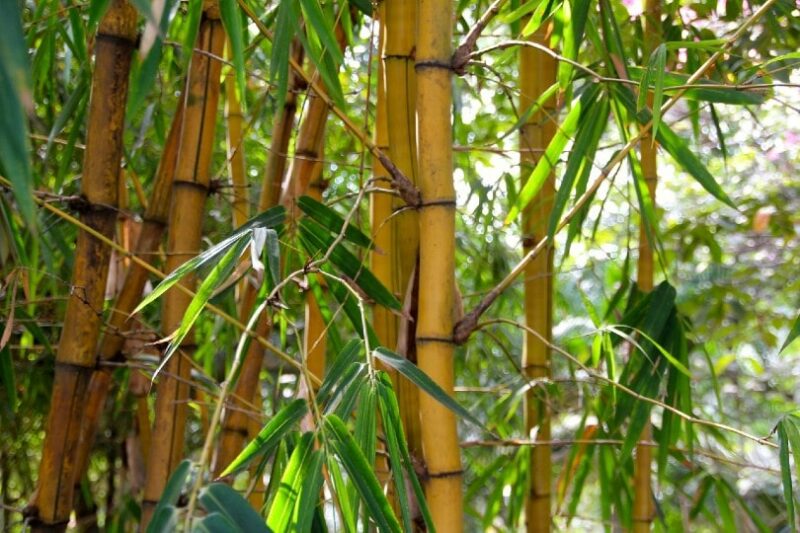
One of the main reasons behind the popularity of bamboo is its unique erect form that can extend up to 5 feet tall in perfect conditions. Since a bamboo’s signature appearance is the tall, strong, and upright stalk, if you notice the stem is droopy, it can be a sign of a bigger problem or even the plant dying.
If the plant’s leaves are curling or drooping, you should add water to your plant immediately. If you react fast to find a remedy, you can save your entire plant from suffering.
How To Revive a Dying Bamboo Plant
There are a few things you could do to prevent your bamboo from dying or to revive an already suffering plant. First, consider your plant’s location and ensure it receives ample lighting without being exposed to direct sunlight. If your leaves are already yellow, remove them carefully with a pair of clean pruners. Removing dead or yellow leaves can promote new growth by letting the plant focus its energy on healthy development.
If you’re growing bamboo in water, make sure to add enough so it covers the roots. While keeping the roots fully submerged, make sure to keep the stalk above water level. Change the water every month to prevent bacteria and pathogens from forming.
Conclusion
Bamboo is a gorgeous-looking ornamental plant, and with the right maintenance, you can achieve a stunning and thriving plant in no time. Once you’ve carefully read this article, you’ll have the necessary knowledge to investigate your bamboo’s condition and determine whether it is dying or if it simply needs more watering. Even if your bamboo starts dying, there are ways you can revive it if you are willing to put in effort and patience.
Featured Image Credit: june88, Pixabay
Contents
